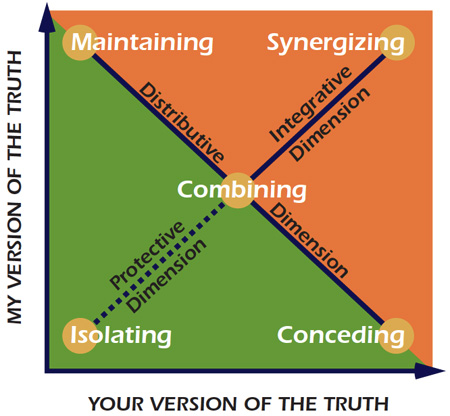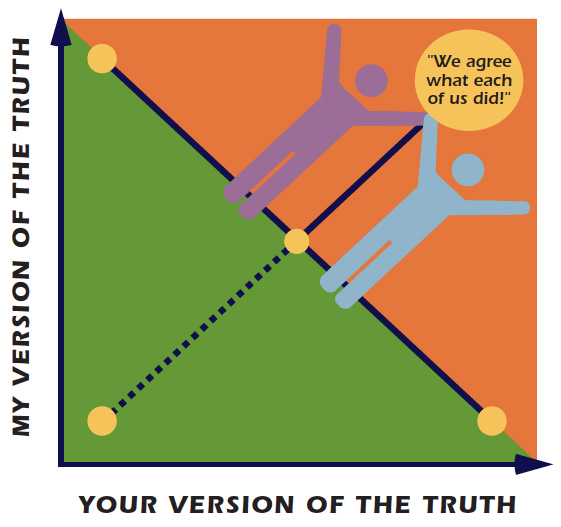30 Oct Resolving the Truth Between Two People in Conflict
Ralph H. Kilmann, co-author of the Thomas-Kilmann Instrument (TKI)
At times, when two people can’t achieve a workable resolution to their conflict (whether in their personal or professional lives), I have found it useful to frame the dialogue as resolving different versions of the TRUTH: What really happened, did anything happen at all, and what is the real truth between the different stories and versions of reality?

Of course, our court system tries to discover the truth through the adversarial process, but there are additional modes for discovering the truth and then moving forward in life.
Not surprisingly, I have used the TKI Conflict Model to represent the two different stories of what happened between the two people…and what is really true. So on the assertiveness dimension is one person’s version of the truth and on the cooperativeness dimension is the other person’s version of what really happened. That use of the conflict model suggests five different ways of resolving the two different versions of truth.

I have taken the liberty of temporarily revising the standard labels to the TKI Conflict Model in order to focus on the truth discussion; maintaining your entire version of the truth over the other person’s claimed story (ordinarily called competing); conceding (accepting) the other person’s full account of what happened, dismissing your own account, and then developing a resolution based totally on the other person’s story of truth (ordinarily called accommodating); combining some portion of your version of what happened with a portion of the other person’s story as the basis of resolving the conflict (compromising); synergizing the two different versions of truth into an altogether new (transformed) story of what happened between the two people (collaborating); isolating the other person, which then prevents the resolution of truth and hence the resolution of the conflict from ever taking place (the dark side of avoiding).
This perspective of managing conflict thus takes the stance that TRUTH (what happened and why) is often at the heart of the disagreement and not until SOME version of truth is accepted by both persons will it be possible to move forward and develop a workable solution (including apologies, forgiveness, and acceptance of what transpired, as might be necessary).

Furthermore, the synergizing mode requires (as does the collaborating mode) some very special conditions in order for it to do its magic, yet this often neglected mode on the integrative dimension surely offers the promise of a full-scale, totally accepted, and meaningful solution…based on a whole new version of the TRUTH of what really happened—and why—between the two people.
As some have said: “There are three truths: My truth, your truth, and what really happened.” But if we think of the possibilities for synergy (collaboration) of two people’s versions of reality, maybe it would make it easier to realize that some truths are socially constructed anyway…so we might as well negotiate it into something useful and healing.
Kilmann Diagnostics offers a series of eleven recorded online courses and nine assessment tools on the four timeless topics: conflict management, change management, consciousness, and transformation. By taking these courses and passing the Final Exams, you can earn your Certification in Conflict and Change Management with the Thomas-Kilmann Instrument (TKI). For the most up-to-date and comprehensive discussion of Dr. Kilmann’s theories and methods, see his 2021 Legacy Book: Creating a Quantum Organization: The Whys & Hows of Implementing Eight Tracks for Long-term success.





